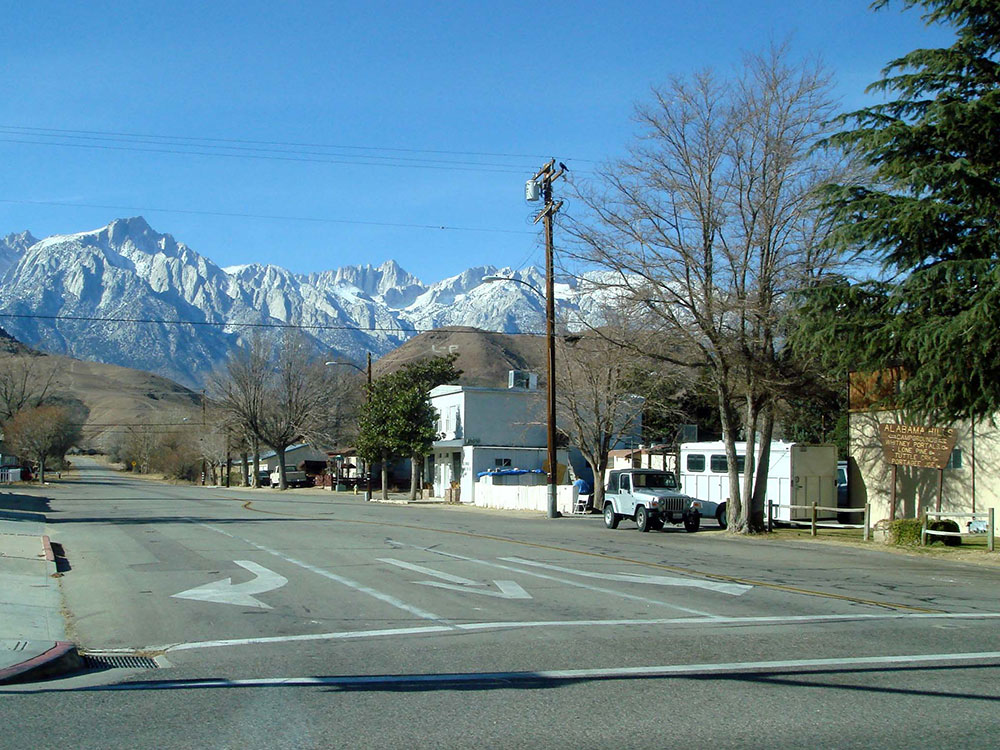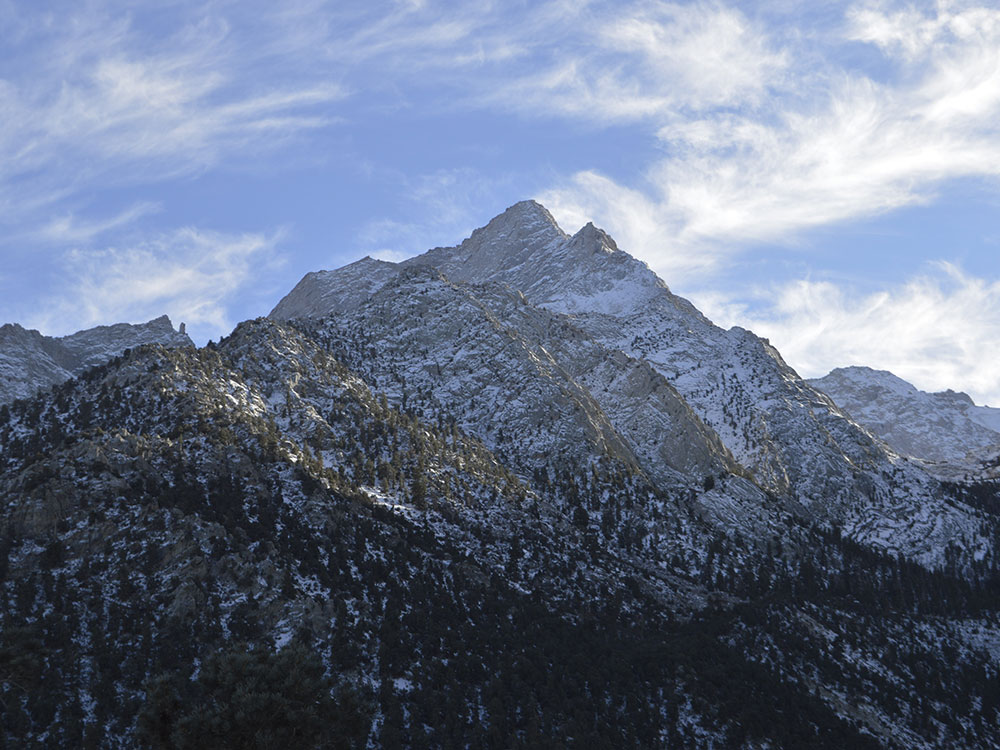Community at an elevation of 3,727 feet, located in the Owens Valley, between the eastern peaks of the Sierra Nevada to the west and the Inyo Mountains to the east
From Las Vegas (232 mi): Get on I-515 N/US-95 N from N 4th St and Exit I-15 N. Follow US-95 N to NV-374 S/Main St in Beatty. Follow NV-374 S and Daylight Pass Rd to CA-190 W in Inyo County. Turn right onto CA-190 W. Continue straight onto CA-136 W. Turn right onto US-395 N/S Main St (signs for Bishop).
From Los Angeles (209 mi): Get on US-101 N from W Temple St. Take CA-14 N to US-395 N in Lone Pine.
Overview
Lone Pine is a community in Inyo County, California, and is located 16 miles (26 km) south-southeast of Independence, at an elevation of 3,727 feet (1,136 m). The town is located in the Owens Valley, near the Alabama Hills and Mount Whitney, between the eastern peaks of the Sierra Nevada to the west and the Inyo Mountains to the east. The town is named after a solitary pine tree that once existed at the mouth of Lone Pine Canyon.

In 1920, the history of Lone Pine was dramatically altered when a movie production company came to the Alabama Hills to make the silent film The Round-Up. Other companies soon discovered the scenic location, and in the coming decades, over 400 films, 100 television episodes, and countless commercials have used Lone Pine and the Alabama Hills as a film location. Notable films shot here in the 1920s and 1930s include Riders of the Purple Sage (1925) with Tom Mix, The Enchanted Hill (1926) with Jack Holt, Somewhere in Sonora (1927) with Ken Maynard, Blue Steel (1934) with John Wayne, Hop-Along Cassidy (1935) with William Boyd, The Charge of the Light Brigade (1936) with Errol Flynn, Oh, Susanna! (1936) with Gene Autry, Rhythm on the Range (1936) with Bing Crosby, The Cowboy and the Lady (1938) with Gary Cooper, Under Western Stars (1938) with Roy Rogers, and Gunga Din (1939) with Cary Grant.
In the coming decades, Lone Pine and the Alabama Hills continued to be used as the setting for Western films, including West of the Pecos (1945) with Robert Mitchum, Thunder Mountain (1947) with Tim Holt, The Gunfighter (1950) with Gregory Peck, The Nevadan (1950) with Randolph Scott, Bad Day at Black Rock (1955) with Spencer Tracy, Hell Bent for Leather (1960) with Audie Murphy, How the West Was Won (1962) with James Stewart, Nevada Smith (1966) with Steve McQueen, Joe Kidd (1972) with Clint Eastwood, Maverick (1994) with Mel Gibson, and The Lone Ranger (2013) with Johnny Depp. Through the years, non-Western films also used the unique landscape of the area, including Alfred Hitchcock's Saboteur (1942) with Robert Cummings, Samson and Delilah (1949) with Hedy Lamarr, Star Trek V: The Final Frontier (1989) with William Shatner, Tremors (1990) with Kevin Bacon, The Postman (1997) with Kevin Costner, and Gladiator (2000) with Russell Crowe.
The most important movie filmed in and around Lone Pine is director Raoul Walsh's High Sierra (1941), starring Humphrey Bogart as Roy Earle in the role that moved Bogart from respected supporting player to leading man. Cast and crew lodged in Lone Pine, and Walsh shot various scenes in and around Lone Pine.
Following the Japanese attack on Pearl Harbor, on December 7, 1941, President Roosevelt signed an executive order that required people of Japanese ancestry living along the Pacific coast to be placed into relocation camps. One of these camps, Manzanar, was built 7 miles north of Lone Pine.
Lone Pine is 95 miles due east of Fresno. However, there is no road crossing the Sierra Nevada to provide access from Lone Pine to Fresno. As a result, the closest accessible large city is Bakersfield, nearly 170 miles away.
This article uses material from the Wikipedia article "Mammoth Lakes, California", which is released under the Creative Commons Attribution-Share-Alike License 3.0
-1000.jpg)
-750.jpg) Robson Hatsukami Morgan robsonhmorgan, CC0, via Wikimedia Commons; Image Size Adjusted
Robson Hatsukami Morgan robsonhmorgan, CC0, via Wikimedia Commons; Image Size Adjusted